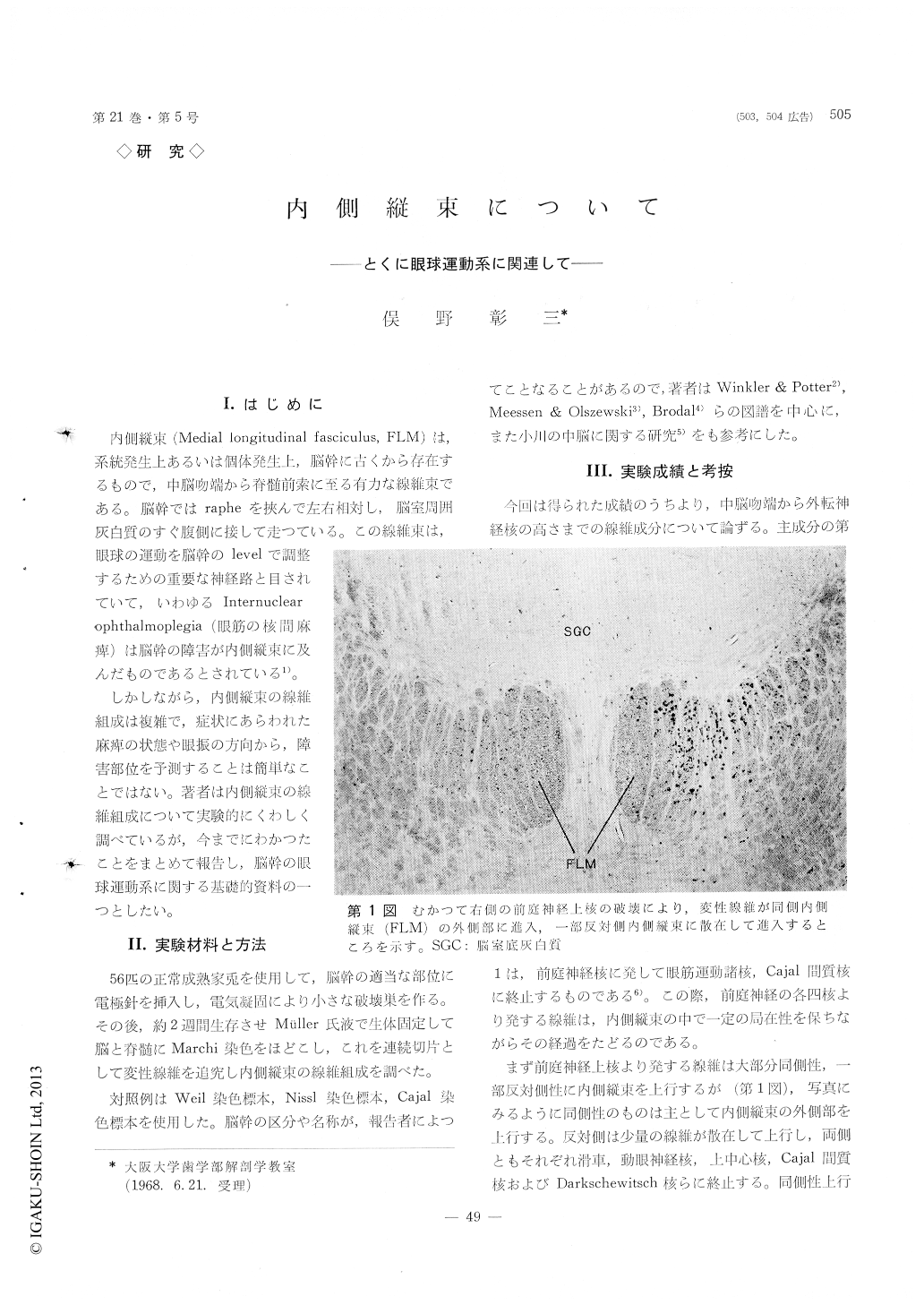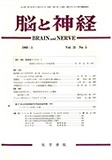Japanese
English
- 有料閲覧
- Abstract 文献概要
- 1ページ目 Look Inside
I.はじめに
内側縦束(Medial longitudinal fasciculus, FLM)は,系統発生上あるいは個体発生上,脳幹に古くから存在するもので,中脳吻端から脊髄前索に至る有力な線維束である。脳幹ではrapheを挾んで左右相対し,脳室周囲灰白質のすぐ腹側に接して走つている。この線維束は,眼球の運動を脳幹のlevelで調整するための重要な神経路と目されていて,いわゆるInternuclear ophthaimoplegia (眼筋の核間麻痺)は脳幹の障害が内側縦束に及んだものであるとされている1)。
しかしながら,内側縦束の線維組成は複雑で,症状にあらわれた麻痺の状態や眼振の方向から,障害部位を予測することは簡単なことではない。著者は内側縦束の線維組成について実験的にくわしく調べているが,今までにわかつたことをまとめて報告し,脳幹の眼球運動系に関する基礎的資料の一つとしたい。
Marchi's preparations of rabbit brains with lesion in the optional point of brain stem were used for this study. The medial longitudinal fasciculus (FLM)in brain stem composes of the following fibers: 1) the secondary vestibular fibers terminating in the ocular muscle nuclei, the interstitial nucleus of Cajal (IS) and some other nuclei, 2) descending fibers from the IS to the ocular muscle nuclei and the vestibular nuclei, 3) tectofugal fibers to the ocular muscle nuclei, 4) fibers, which separate from the commissure of the dorsal nucleus of the lateral lemniscus, terminating in the oculomotor and troch-lear nuclei, 5) the ascending fibers from the pon-tine reticular formation to the ocular muscle nuclei, IS and the thalamus. These components show a topographic distribution into the FLM. Accordingly, the FLM is a main nervous pathway of the oculo-motor system in brain stem related to the visual and vestibular coordinations. In addition, the IS is worth notice as an important intermediate station of this complex system.
The internuclear ophthalmoplegia is well known as a symptom by the result of lesion in the FLM. Therefore, the mentioned above fiber connections pivoting the FLM should be always considered in a case of the internuclear ophthalmoplegia.

Copyright © 1969, Igaku-Shoin Ltd. All rights reserved.


